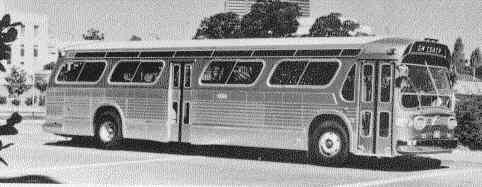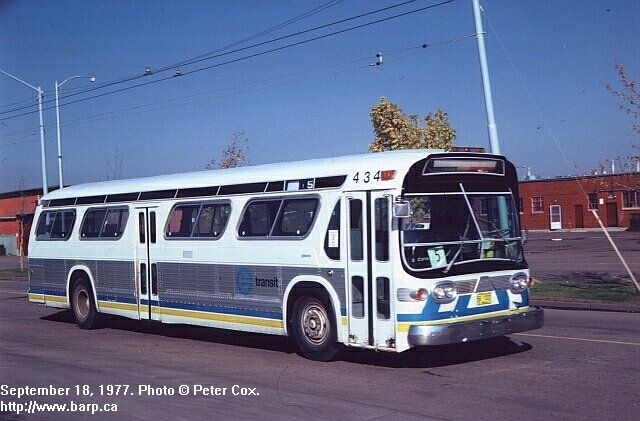
By Steve Parkin
G.M.C.
New Look Buses

By
Steve Parkin
General Motors “New Look” buses were the
workhorses of most North American Transit Systems starting late in 1959 until
the late 1980’s in the U.S.A., and some continue run into the new millenium,
primarily in Canadian cities, although their numbers are decreasing with each
passing year. This style of bus started a whole generation of new designs from
several manufacturers, all following the basic new look style - larger windows
on these buses set them all apart from buses produced in what became known as
the Old Look style. Incidentally, General Motors continued to produce a small
capacity Old Look bus for another 10 years after the start of the New Look’s
production. These were all US built, and in 1969 a 29 foot version of the New
Look, also US built, replaced them.
Popular for their styling, ease of maintenance and relatively economical operation, drivers loved
them because of the ease of steering and the visibility through the large
windows. They continue to operate today as they are extremely reliable and cost
less to maintain than modern, more complex buses with all their electronic
controls. These buses earned the nickname “Fishbowl” because of the large 6
piece windshield, and are the favorite model of many bus enthusiasts.

The original production began in late 1959 at Pontiac, Michigan, with model
TDH-5301, a 40’ by 102” bus. Some of these early US built buses were
imported by Canadian customers through Diesel Division of General Motors of
Canada. In 1961, a second production line was started at London, Ontario. The
TDH-5301 was also the first model built in Canada. The first Canadian bus went
to Hull City Transport in Hull, Quebec.
These buses were produced in several lengths, 29, 35 and 40 feet. Depending on
the model, available widths were 96 inches or 102 inches. There were
“Transit” versions as well as a “Suburban” version that featured high
back seats, overhead luggage racks and optional under floor luggage bays. These
were also geared more for highway speeds whereas the Transit versions were built
for stop and go city driving. The Suburban version typically only had a front
door, although the basic body style was the same for all models.
US production ended in 1977 but continued in Canada until 1986. It speaks well
of this design when today transit companies are rebuilding later models of these
buses to further extend their service life. The Toronto Transit Commission and
Calgary Transit are but two examples of large systems doing so. It is likely
safe to say that some areas of Canada will still be running GMC New Looks for
another 10 to 12 years considering the number that have been rebuilt in the last
few years by some Properties.
Fortunately, many
examples of these buses have been preserved, some by the Properties that once
ran them and others are privately owned. Hopefully some of these buses will be
around for many years and allow people to take a trip back in time.